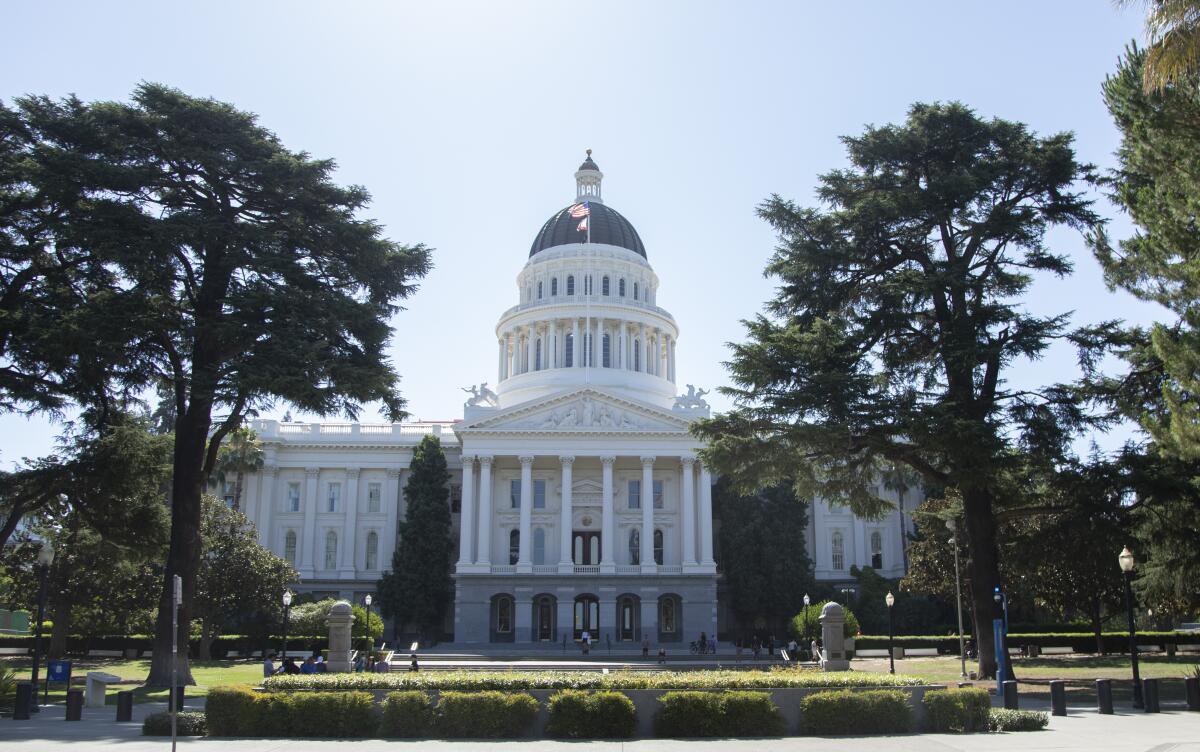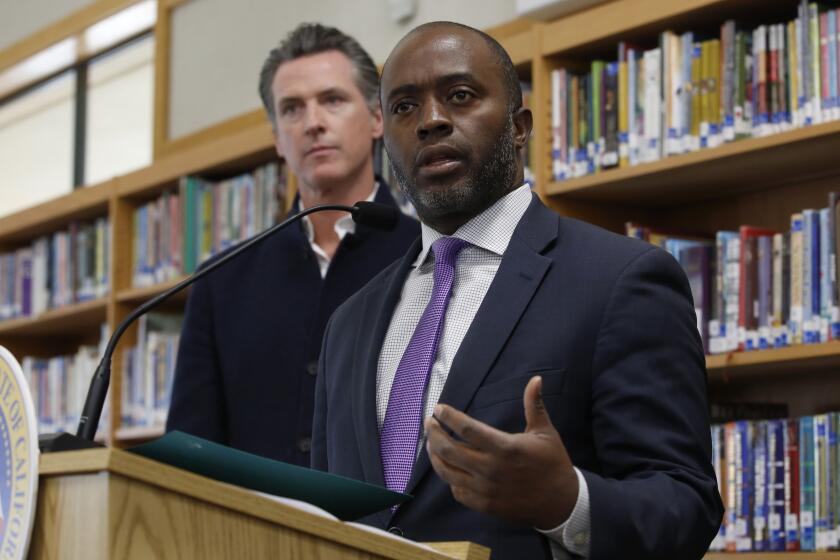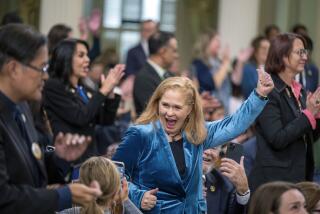Editorial: The Board of Equal What? Let California voters decide whether to dump pointless elected positions

It’s time for a three-part quiz on California government.
Question 1: What does the California Board of Equalization do?
If you’re stumped, don’t despair. This obscure state tax agency run by four regionally elected board members and the state controller has considerably fewer duties than just a few years ago. In 2017, after accusations of mismanagement and corruption, the California Legislature stripped the board of about 90% of its duties and staff and handed them over to two newly formed state agencies, the Department of Tax and Fee Administration and the Office of Tax Appeals. The board’s main responsibility at the moment is making sure county assessors properly collect property taxes.
Question 2: What does the elected state superintendent of public instruction do?
This answer may seem easier, but it’s tricky. An obvious guess would be that this nonpartisan elected official sets policy for the California Department of Education and approves curriculum frameworks and academic standards for the state’s public schools. But, no; that’s the job of the appointed state Board of Education. The state superintendent’s job is to oversee the department and its employees, the type of job usually held by an appointee with expertise in management.
Reeling from allegations of financial blunders, nepotism and improper use of civil servants for political benefit, California’s tax collection board agency finds itself temporarily stripped of its power as it awaits the possibility of the biggest overhaul in its 138-year history.
Question 3: Does California really need these five elected officials?
Probably not. But that’s a question that we hope voters will get to answer next year.
Two bills would put constitutional amendments on the 2024 ballot to do away with the positions. One, ACA-11, by Assemblymember Phil Ting (D-San Francisco), would eliminate the Board of Equalization and hand the rest of its duties and staff over to the state’s other tax agencies; the other, ACA-9, by Assemblymember Kevin McCarty (D-Sacramento), would eliminate the elected superintendent position once the term of the current officeholder ends and replace it with one appointed by the governor.
These are sensible proposals. The Legislature should support the bills, which would let the voters decide. We have been saying in editorials for years that these positions are unnecessary and it’s a waste of money to maintain them.
It seems the only reason these five elected seats have hung around so long (the Board of Equalization was established in 1879) is that they often serve as career-extending positions for termed-out legislators. The current state superintendent of public instruction, Tony Thurmond, is a former member of the California Legislature, as were the three superintendents before him. Two of the four current elected Board of Equalization members are former state legislators too. The other two are former city council members. None of them are experts in tax policy. (The fifth board member, the state controller, is an ex officio member.)
Two years after the governor devised a plan to reopen schools, lingering COVID-19 frustrations may fuel debate about the role of California’s superintendent of public instruction.
Putting these questions on the ballot will open up a healthy debate about the roles and responsibilities of elected officials, as well as the function and structure of government. Having more elected positions doesn’t automatically translate to better oversight.
One of the main reasons that the Board of Equalization was gutted in 2017 was because of evidence that the elected officials were misusing staff and funds to serve their own political interests. For example, one of the board members assigned 113 employees to parking and registration duties at a conference that was not focused on tax policy.
One concern already being voiced is that the staff of the Board of Equalization, even in its diminished state, does important work and offers valuable tax assistance to voters and county assessors. That work can continue whether or not it is overseen by four elected board members. In fact, no other state has an elected tax commission. Besides, ACA-11 would eliminate only 13 BOE positions. Most of the nearly 200-person workforce is made up of civil servants who would do the same work as part of another state agency.
Can we finally stop electing the members of the state Board of Equalization?
For those worried that eliminating these five elected jobs will dilute the power of the voters to direct state and local government services, consider this: There are seven other statewide constitutional officers, including the governor, as well as 120 full-time state legislators and many thousands of elected officials representing the 58 counties, 482 cities and more than 1,000 school boards in California. And that’s not even counting the state’s many elected water boards and special districts. Californians don’t have a shortage of opportunities to elect government representatives.
But ultimately, it should be up to voters to decide. Once they know enough about these five elected positions to confidently answer the essay portion of a California civics quiz, we think the choice will be clear.
More to Read
A cure for the common opinion
Get thought-provoking perspectives with our weekly newsletter.
You may occasionally receive promotional content from the Los Angeles Times.











